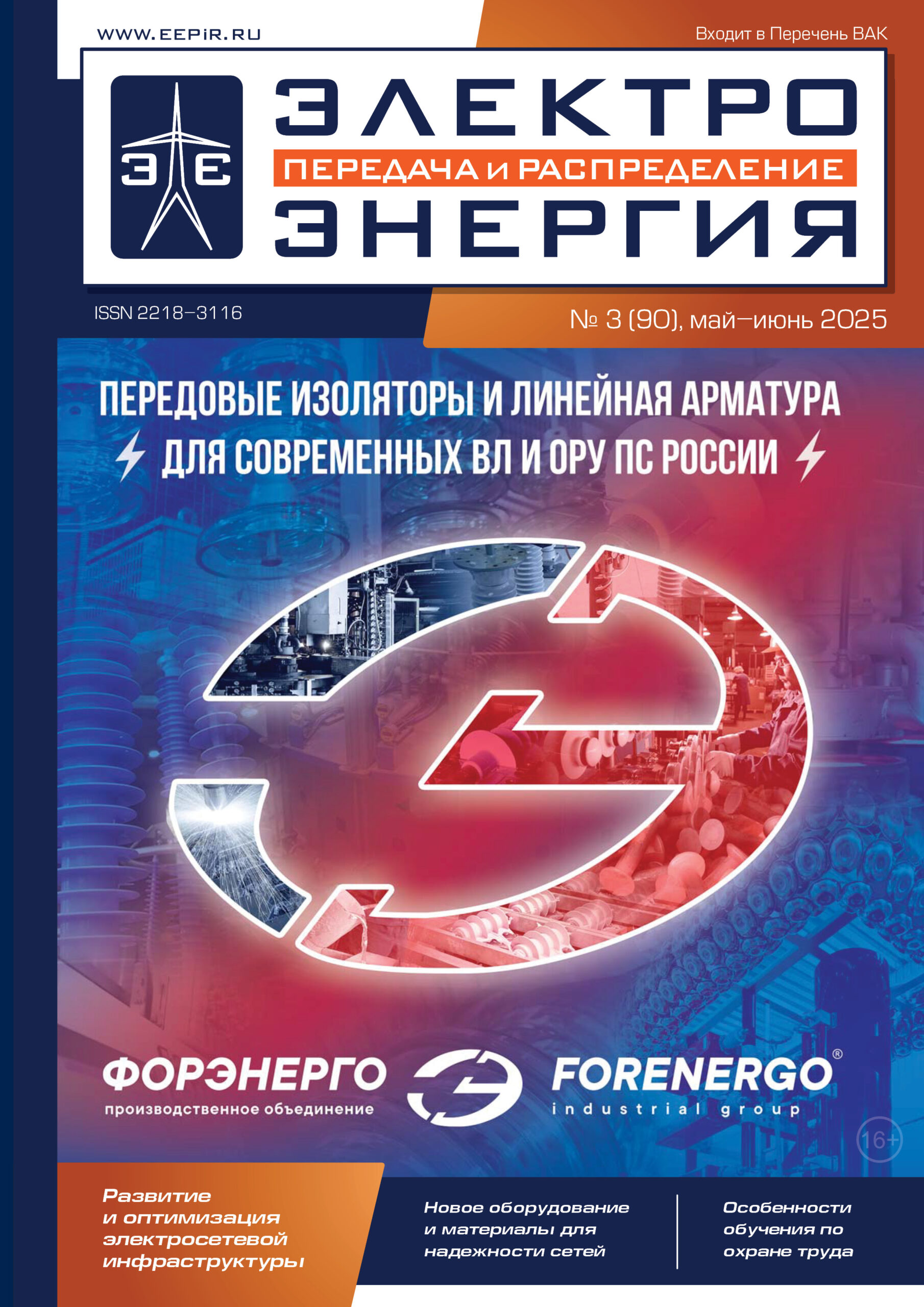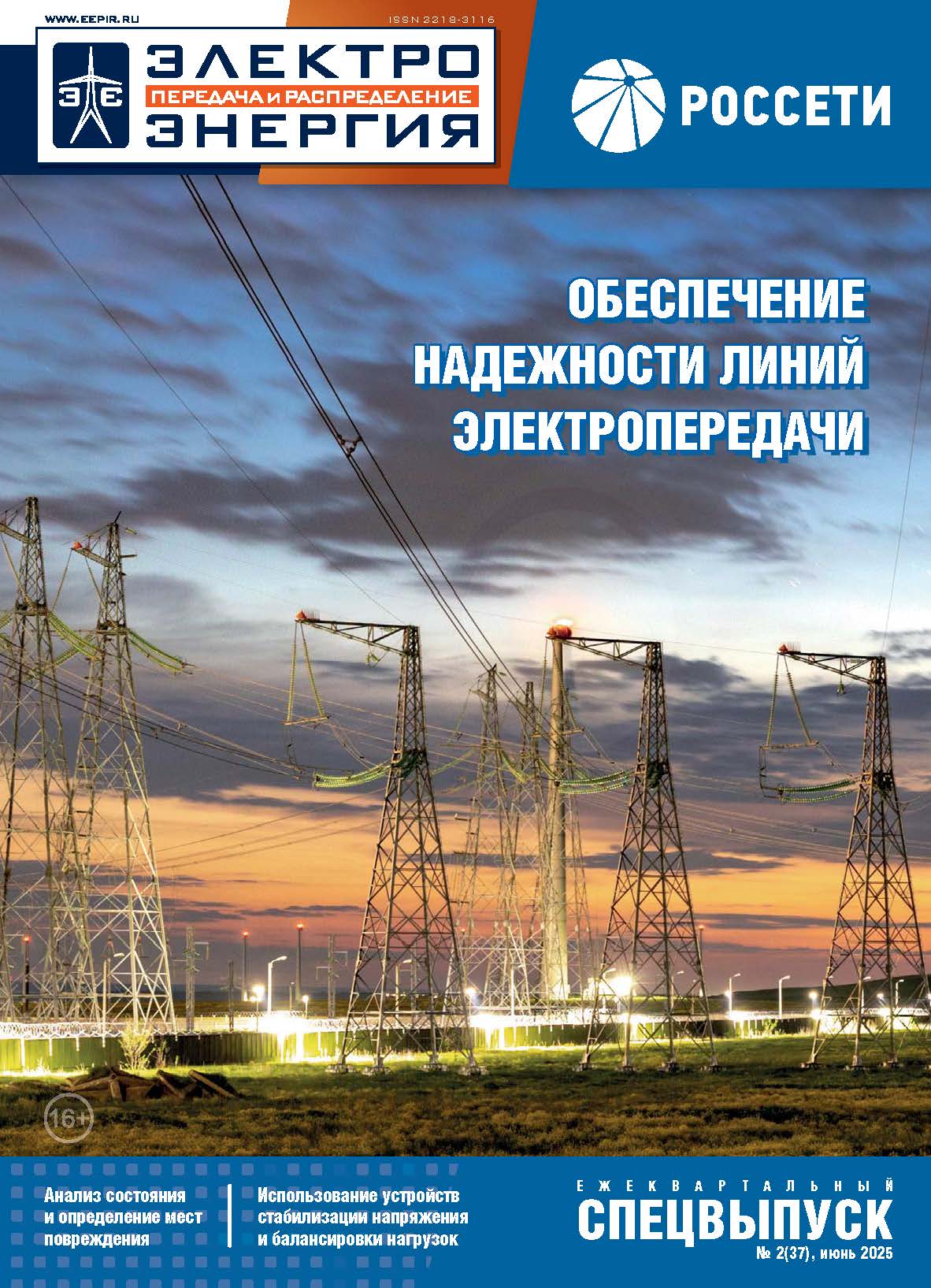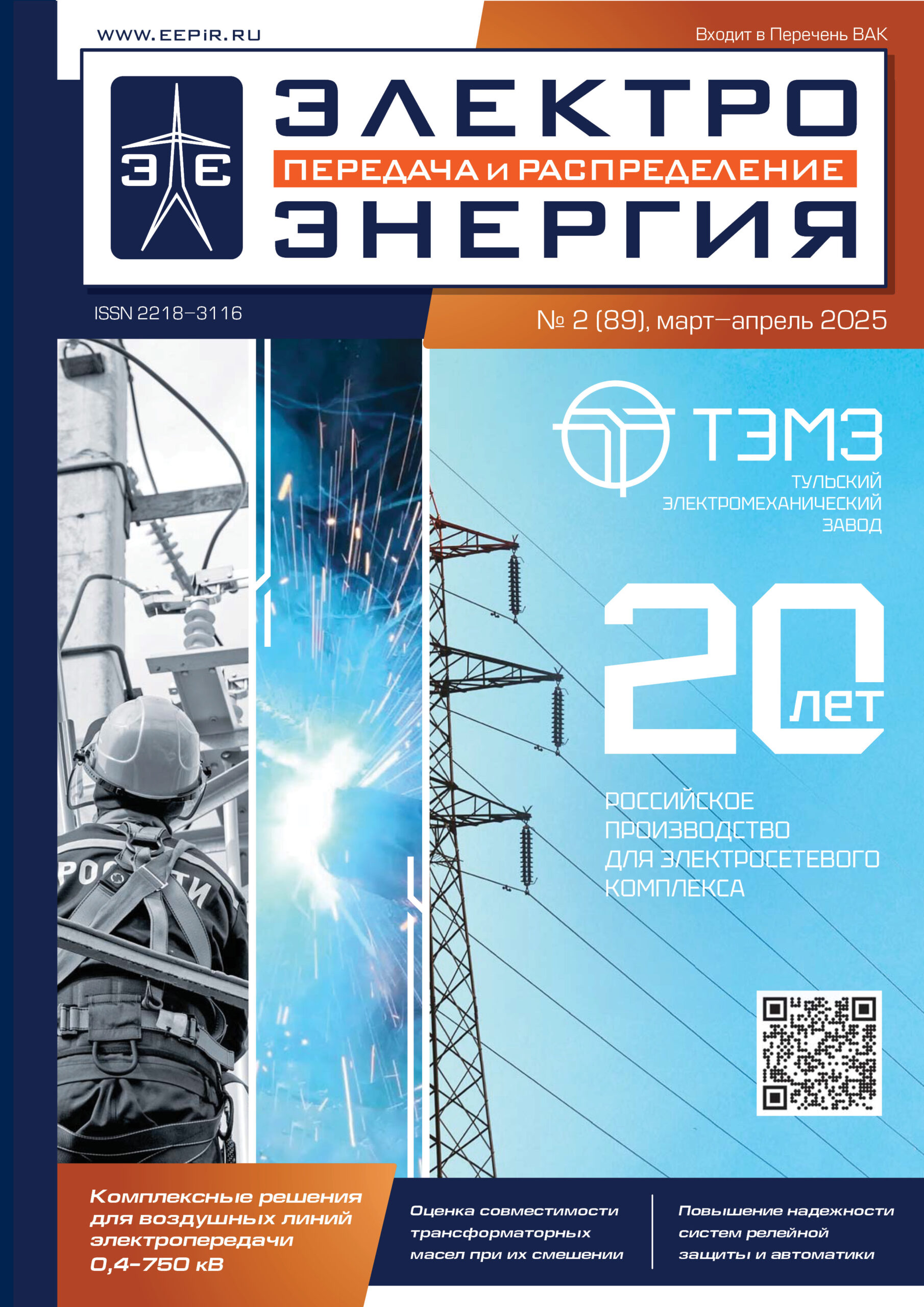 2017 eepir/3 (42) 2017 обложка.jpeg)
14 июня 2017
«ЭЛЕКТРОЭНЕРГИЯ. Передача и распределение» № 3(42), май-июнь 2017
АКТУАЛЬНО
ИНВЕСТИЦИИ
УПРАВЛЕНИЕ СЕТЯМИ
УЧЕТ ЭЛЕКТРОЭНЕРГИИ
НАРУЖНОЕ ОСВЕЩЕНИЕ
КАБЕЛЬНЫЕ ЛИНИИ
РЕЛЕЙНАЯ ЗАЩИТА И АВТОМАТИКА
РЕЛЕЙНАЯ ЗАЩИТА И АВТОМАТИКА
ДИАГНОСТИКА
ДИАГНОСТИКА
ДИАГНОСТИКА
ДИАГНОСТИКА
МИРОВОЙ ОПЫТ
TOPIC OF INTEREST
Power engineering as a driver of global integration
Budargin O.M.
, Director General, PJSC “ROSSETI”
International power system interconnections in Eurasia and their integration with Russian Unifi ed Energy System (UES)
The paper considers the development of inter national electric connections and power system interconnections in Eurasia, including Europe, the post-Soviet space and South-East and North-East Asia. International integration energy projects with the participation of Russia are presented. Among these projects are Baltic, the Black Sea, and Caspian energy rings, the South-Central Asian international power system interconnection, the energy bridge from Russia to Japan and others. The role of the Russian UES in the development of Eurasian power system interconnection is analyzed. Presented performance study results of power system interconnection in Northeast Asia demonstrates high efficiency of this power system interconnection.
Keywords: international electric connections and power system interconnections, trend, integration, systemic impacts, energy ring, energy bridge
EVENTS
Identification of problems and tasks
Meeting of PJSC “ROSSETI” subsidiaries and affiliates technical directors following the results of 2016–2017 autumn and winter period
IDGC of North-West, PJSC implements a revised technical policy of PJSC “ROSSETI”
PJSC “MOESK” suggestions concerning energy storage
Inextinguishable light of Moscow Cable Networks over a period of 120 years.
EMPHASIS
Modern solutions in the power facilities construction implemented by JSC “Moskabelsetmontazh”
TECHNOLOGICAL CONNECTION
Technological connection becomes simpler, faster and more accessible.
Round-table conference on the road mapimplementation with the participation of JSC “Tyumenenergo”,
PJSC “MOESK”, IDGC of North-West, PJSC and IDGC of the South, PJSC representatives
INVESTMENTS
New vector of development.
IDGC of Centre, PJSC investments in the power grid facilities development will be more than 15 bln rubles
ELECTRICAL GRID MANAGEMENT
Steady-state stability solutions for backbone electrical power systems reliability
Keywords: steady-state stability, critical section, Jacobian, power angle
ELECTRIC POWER METERING
Procedure error when calculating undocumented and unaccounted electrical energy consumption.
MPEI
STREET LIGHTING
The opinion of Australian specialists on the subject of smart lighting
Structure and functionality of smart street lighting system (according to material of round-table conference in Sydney)
Impact of switching and lightning overvoltage on the street lighting operational reliability.
JSC “UNECO”
OVERHEAD TRANSMISSION LINES
Thermal resistance calculation for 110-750 kV overhead ground-wire cable
Dmitriev M.V., Rodchikhin S.V.
One of the project documentation sections is the thermal resistance calculation for 110–750 kV overhead ground-wire cable in the event of short-circuit current. Usually for such calculation simple and proven methodology guidelines developed in the USSR in 1976 have been used.
After a release of a new edition of methodology guidelines by PJSC “FGC UES” designed as a company standard in 2014 the situation has been changed. As it turned out the new document is more difficult and requires taking into account a significant number of initial data. Therefore, designers have to seek author’s help on the commercial basis. We will try to un der stand the difference between documents dated 1976 and 2014.
Keywords:
overhead transmission line, ground wire, short circuit, thermal resistance
Improvement of transmission lines lightning protection reliability.
“EM-KABEL”, LLC
New technical policy in power industry.
Nonprofit partnership “Elektrosetizolyatsiya”
CABLE LINES
XLPE cables thermal calculations. Part II. Definition of coefficients in formulas
of permissible current loads
Poleshchuk S.I.
The article analyzes the coefficients in the current load formulas for cables with XLPE insulation, the derivations of formulas is given in. It is shown that it is not suitable for practical calculations for the existing formulas active resistances of current-carrying cores of AC cables. A simplified formula is proposed for determining the active resistances of the cores for an alternating current with respect to the resistance of cores to a direct current. The formulas are proposed for calculating the external thermal resistances of the cables laid in the trough, with the top flush with the soil surface, and in the ground with three layers of backfill soil.
Keywords: electric cables, skin effect, dielectric losses, thermal resistance
RELAY PROTECTION AND AUTOMATION
Basic issues of protective relay operation and development were discussed on “RELAVEKSPO-2017” forum
Precise fault point determination of 110 kV transit overhead lines by means of two emergency events recorders.
“Orenburgenergo”, the branch of IDGC of Volga, PJSC
EQUIPMENT
The first in Russia 500 kV high-voltage bushing between dielectric oil and SF6 gas.
“Izolyator” Company
“ZETO”, CJSC integrated solutions for construction and modernization of electric substations
Toshiba innovations for transformers construction in Russia
Family of network switches and
СОЕВ
TOPAZ.
PLC Technology, LLC
DIAGNOSTICS
Nondestructive diagnostics of electric equipment through the use of radio graphic imaging method.
PJSC “LENENERGO”
Workshop on modern methods of electric equipment diagnostic monitoring
Methods for effective technical diagnosis of equipment. Ultrasonic inspection of 35–110 kV substations.
PJSC “IDGC of Siberia”
Market review of ultraviolet fault indicators for monitoring of transmission lines and open and indoor switchgears. The features of equipment choice.
“PANATEST”, LLC
The method for fault place determination in the highvoltage windings of transformers.
“SKB EP”, LLC
EXHIBITIONS AND CONFERENCES
V International power engineering forum in Russia
“Elektro-2017” electric equipment exhibition
Ships of all fl ags will come to us. “RZA-2017”
International conference and exhibition
GLOBAL EXPERIENCE
Important events in world power systems operation and development from April to May 2017.
“SO UPS”, JSC
JOURNEY THROUGH THE PAST
From telephone to automated system — development ofdispatching control tools.
“SO UPS”, JSC





